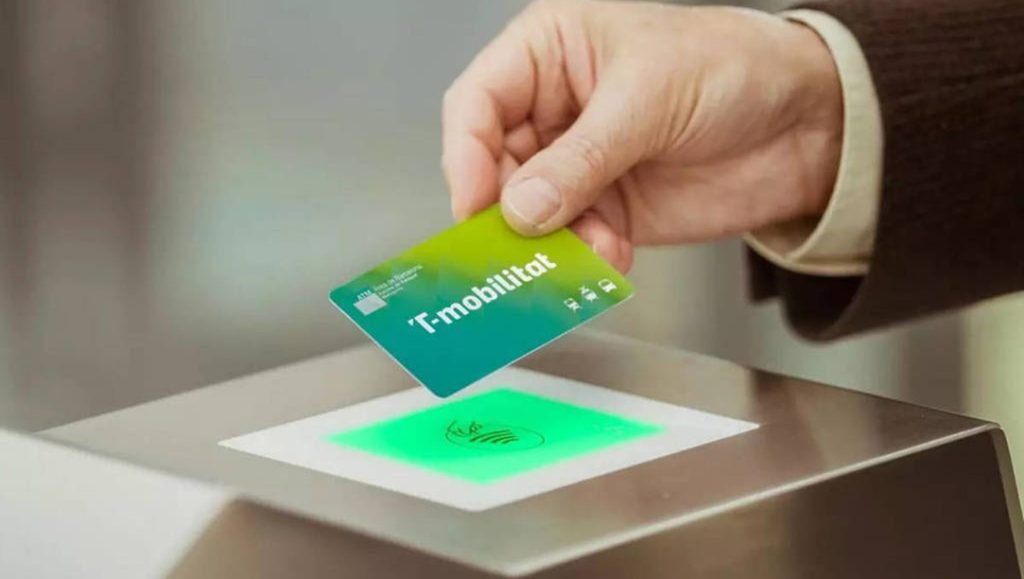The first time I set foot in Barcelona, I quickly realized that this city is not only home to breathtaking architecture and a rich cultural heritage but also boasts one of the most efficient and convenient public transportation systems I’ve ever experienced. If you’re planning a trip to Barcelona, understanding how to get around is absolutely essential. It can save you a lot of time and money, and help you experience the everyday rhythm of this Mediterranean gem on a deeper level.
I will provide a detailed overview of Barcelona’s public transportation system, including the metro, buses, trams, suburban trains, and ride-sharing options.I’ll also share practical tips and cost-saving strategies that I’ve learned firsthand, so you can explore the city the smart way.
1. Public Transport Overview: A Dense Network with Smooth Connections
Barcelona’s public transport is managed by TMB (Transports Metropolitans de Barcelona) and includes the metro, city buses, trams, and funiculars. Additionally, RENFE operates the suburban trains (Rodalies), and FGC (Ferrocarrils de la Generalitat de Catalunya) runs a light rail system. These services are well integrated and can all be accessed using a single travel card.
2. Metro: Efficient, Convenient, and the First Choice for Getting Around
Metro Lines Overview
Barcelona currently has 12 metro lines covering both central and outlying areas. Major lines like L1 (Red), L3 (Green), and L5 (Blue) connect key tourist attractions such as the Sagrada Família, Plaça Catalunya, and Casa Batlló.
Operating Hours
- Monday to Thursday: 5:00 AM – Midnight
- Friday and holiday eves: 5:00 AM – 2:00 AM
- Saturday and certain holidays: 24 hours
This schedule is especially convenient for night activities. I remember one night after watching the Magic Fountain show, I took the L1 line back to my hotel. The train was clean, punctual, and had electronic screens displaying each stop—very reassuring.
Tips:
- Avoid peak hours (8:00–9:30 AM and 5:00–7:30 PM) on weekdays.
- Take a photo of the metro map or display board in the station—it helps with navigation.
3. Bus System: A Detailed Network That Reaches Deep into Neighborhoods
Barcelona’s bus network plays a vital role in complementing the metro system, especially in areas where underground lines are less practical—like the hills of Gràcia, the labyrinthine alleys of El Raval, or the artsy zones around Poblenou. The network is extensive and well-planned, featuring regular daytime routes (typically labeled with D for Diagonal and H for horizontal axes), a comprehensive NitBus night service, and specialty lines like those running directly to the airport or major events.
Advantages:
- Most buses operate from 6:00 AM to 11:00 PM, offering frequent service during peak hours.
- NitBus services run every 20–30 minutes between 11:00 PM and 5:00 AM, making them ideal for late-night dining or red-eye flights.
- Onboard digital displays and multilingual audio announcements ensure clarity even for first-time visitors.
Once, while returning to the Gothic Quarter at night, I took a NitBus. Despite the late hour, the bus was tidy and well-ordered, and the driver kindly answered questions about directions.
Tips:
- Google Maps and Moovit are highly accurate for route planning and timing—check them before heading out.
- Always board through the front door and validate your ticket or scan your card on the reader. Unchecked boarding is monitored and considered fare evasion, which could lead to fines.

4. Trams: A Relaxed Way to Travel Between City and Suburbs
Barcelona’s tram network is a quieter, more scenic alternative to the bustling metro. Divided into two sectors—Trambaix (T1 to T3) serving the western and southern suburbs, and Trambesòs (T4 to T6) connecting the northeastern neighborhoods and coastline—the system is known for its smooth rides, large windows, and efficient connection between emerging residential and commercial areas. Trams are especially convenient for accessing destinations like Diagonal Mar shopping center, the Forum exhibition area, or university campuses such as UPC.
While slower than the metro, trams offer a more laid-back experience. I particularly enjoy riding the T4 line from the Glòries area toward the sea on weekend mornings. The journey passes through modern urban landscapes and ends near the Mediterranean, where cafés and wide promenades await. It’s a wonderful way to enjoy the city at a slower pace and observe local life beyond the typical tourist hubs.
Trams are fully accessible, equipped with ramps and audio-visual notifications for each stop. They also tend to be less crowded, making them perfect for families, elderly travelers, or anyone with luggage.
5. RENFE and FGC: Suburban and Regional Train Lines
For day trips or visits to nearby gems like Montserrat’s monastery, Sitges’ beachside charm, or Terrassa’s historical sites, Barcelona’s suburban train systems are essential. RENFE Rodalies is the regional train service connecting the city to the broader Catalonia region. Lines like R1, R2, R4, and R5 are particularly popular with travelers. In contrast, FGC (Ferrocarrils de la Generalitat de Catalunya) is more urban-centric, operating like a high-frequency metro, and ideal for reaching academic institutions, office parks, or residential areas around the city.
Trains are clean, punctual, and comfortable, with electronic signage displaying real-time updates. I once took the R5 Rodalies to Montserrat early in the morning—seamless connections and scenic views made the journey just as memorable as the destination.
Tips:
- Travel passes like T-casual (10 journeys), Hola BCN (unlimited rides for 1–5 days), and T-usual (monthly) work across RENFE and FGC within Zone 1—no extra tickets needed.
- Train platforms display line numbers, stops, and final destinations. Confirm you’re on the correct platform and boarding the right direction—especially since some platforms serve multiple lines.
6. Shared Mobility: E-Bikes, Scooters, and the Bicing Bike Network
In addition to its well-developed public transport system, Barcelona embraces sustainable shared mobility options that are perfect for quick and flexible travel. The Bicing bike network, a red-and-white fleet of standard and electric bikes, is designed primarily for residents and requires a local registration. However, tourists can easily access e-scooters and e-bikes through global app-based platforms like Bolt, Lime, Dott, or Reby. These vehicles are ideal for shorter, scenic routes and can be picked up or dropped off at various spots throughout the city.
I often opt for Lime scooters, especially along the seafront between Barceloneta and Diagonal Mar. The breeze, the sea views, and the freedom to stop wherever I like make it one of the most enjoyable ways to explore the coastline. Just be mindful of designated scooter lanes and parking zones—Barcelona enforces clear rules to keep public spaces tidy and safe for all users.
7. Smart Ways to Save Money: Choose the Right Travel Pass
1. T-casual (10-trip card)
- Best suited for solo travelers or short city breaks.
- Valid on metro, bus, tram, RENFE Rodalies, and FGC within Zone 1.
- Non-transferable between users.
- 2025 Price: €11.35
This pass was perfect when I stayed for a long weekend—I used it strategically for museum visits and dinners around town.
2. Hola BCN Card (1 to 5-day pass)
- Offers unlimited access to TMB transport including metro (all lines), buses, and airport L9 Sud.
- Can be activated on first use and runs consecutively.
- Ideal for tourists planning a packed itinerary.
- 2025 Prices: €17.50 (1 day), €38.00 (5 days)
On my first trip, I bought the 3-day version and crisscrossed the city—Sagrada Família, Park Güell, Montjuïc, and more—without ever worrying about ticket costs.
3. T-usual (monthly pass)
- Unlimited rides across all public transport modes for 30 consecutive days.
- Transferable across metro, tram, bus, RENFE, and FGC in Zone 1.
- Great for digital nomads or extended stays.
- 2025 Price: €21.35/month (Zone 1)
Important Notes:
Most passes cover Zone 1, which includes nearly all tourist attractions. However, if you’re planning to visit nearby towns like Sitges, Montserrat, or Castelldefels, you’ll need additional zone coverage or separate RENFE tickets, which are still affordable and easy to purchase at machines or online.

8. Getting to and from El Prat Airport
1. Metro L9 Sud
- Connects both T1 and T2 terminals to the city metro network.
- Single ticket: €5.50 (included with Hola BCN card)
2. Aerobus A1/A2
- Runs every 5–10 minutes to Plaça Catalunya.
- Ticket: €6.75, travel time: 35 minutes
3. RENFE Train
- Departs from Terminal 2 and connects to Sants Station—ideal for train transfers.
I often use the Aerobus—it’s fast, comfortable, and especially convenient after landing or before a flight.
9. Safety and Comfort Tips
- Keep your wallet and phone secure: Watch out for pickpockets in crowded areas like La Rambla or busy metro stations.
- Avoid remote stations late at night, especially when traveling alone. Stick to well-lit and populated areas.
- Always carry your ticket: Metro and train systems occasionally conduct random checks—fines can reach €100.
10. Exploring Barcelona Starts with Understanding Its Transport
Barcelona is a city made for walking, but also for smart transport users. Once you understand the public transport system and how to save money using it, each journey becomes smoother and more enjoyable. It allowed me to dive deeper into lesser-known corners of the city—those off the typical tourist radar—without worrying about time or budget.



